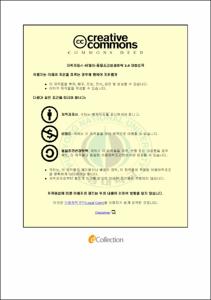PAC와 alum을 이용한 하수 인 제거 응집공정의 최적화를 위한 반응표면분석법의 적용
- Alternative Title
- Application of response surface methodology(RSM) to optimize coagulation treatment of wastewater using poly-aluminum chloride(PAC) and alum
- Abstract
- The goal of this paper sets up the experimental design through the reaction analysis method and executes an experiment and tries to find the coagulant dose according to the Al:P mol ratio of the optimum coagulant Polyaluminum chlorid(PAC) and alum a condition in order to minimize the phosphoric concentration which is suitable for the effluent standard. The experiments were carried out using jar test and response surface methodology(RSM) a systematic experimental design which was applied to optimize the coagulation process. A central composite design(CCD), which is the standard design of RSM, was used to build a response surface model and evaluate the effects and interactions of the two factor(PAC,alum), such as coagulant dose(Al:P mol ratio), phosphorus concentration.
As a compromise between the two responses, the minimum amount of 0.2mg/L P. The optimum condition s which yielded by using 2.0 PAC(Al:P mol ratio) and 2.5 alum(Al:P mol ratio) in case of the bioreactor effluent. Therefore, 2.8 PAC(Al:P mol ratio) and 1.97 alum(Al:P mol ratio) in bioreactor effluent.
TP used mainly in the field and the to set the DRP value at a variable and minimize the phosphoric concentration 0.1mg / L were optimized with a goal in order to grasp the phosphorus concentration by using the response optimizer tool. This demonstrates the benefits of the approach beasd on thr RSM in achieving maximum amount of information.
- Issued Date
- 2011
- Awarded Date
- 2011. 2
- Type
- Dissertation
- Publisher
- 부경대학교
- Affiliation
- 부경대학교 일반대학원 환경공학과
- Department
- 대학원 환경공학과
- Advisor
- 이병헌 교수
- Table Of Contents
- 제 1 장 서론 1
제 2 장 문헌연구 5
2.1 인의형태와 특성 5
2.2 인의 분류 7
2.3 알루미늄염의 가수분해와 착화합물 형성 10
2.4 응집 메커니즘 18
2.4.1 이중층 압축 19
2.4.2 흡착과 전하중화 21
2.4.3 체거름 응집 22
2.5 하수의 화학적 인 제거 24
2.5.1 화학적 침전이론 24
2.5.2 인의 침전시 화학반응 29
2.6 반응표면분석법 31
2.6.1 반응표면분석법의 개념 31
2.6.2 중심합성법 36
제 3 장 재료 및 방법 38
3.1 원수의 수질특성 38
3.2 응집제 39
3.3 실험장치 및 방법 41
3.3.1 반응표면분석법을 이용한 실험계획 41
3.3.2 응집 실험 (Jar test) 43
3.3 수질분석방법 45
3.3.1 인 45
3.3.2 탁도 46
3.3.3 UV254 47
제 4 장 결과 및 고찰 48
4.1 생물반응조 부유물 혼합액의 인 분류 제거특성 48
4.1.1 생물반응조 부유물 혼합액의 인 분류 제거특성 48
4.1.2 생물반응조 부유물 혼합액의 화학적 인 제거 특성 49
4.1.3 생물반응조 부유물 혼합액의 화학적 인 제거 최적화 76
4.2 생물반응조 유출수의 인 분류 특성 79
4.2.1 생물반응조 유출수의 인 분류 특성 79
4.2.2 생물반응조 유출수의 화학적 인 제거 특성 80
4.2.3 생물반응조 유출수의 화학적 인 제거 최적화 107
제 5 장 결론 110
참 고 문 헌 113
감사의 글 119
- Degree
- Master
- Files in This Item:
-
-
Download
 PAC와 alum을 이용한 하수 인 제거 응집공정의 최적화를 위한 반응표면분석법의 적용.pdf
기타 데이터 / 2.47 MB / Adobe PDF
PAC와 alum을 이용한 하수 인 제거 응집공정의 최적화를 위한 반응표면분석법의 적용.pdf
기타 데이터 / 2.47 MB / Adobe PDF
-
Items in Repository are protected by copyright, with all rights reserved, unless otherwise indicated.